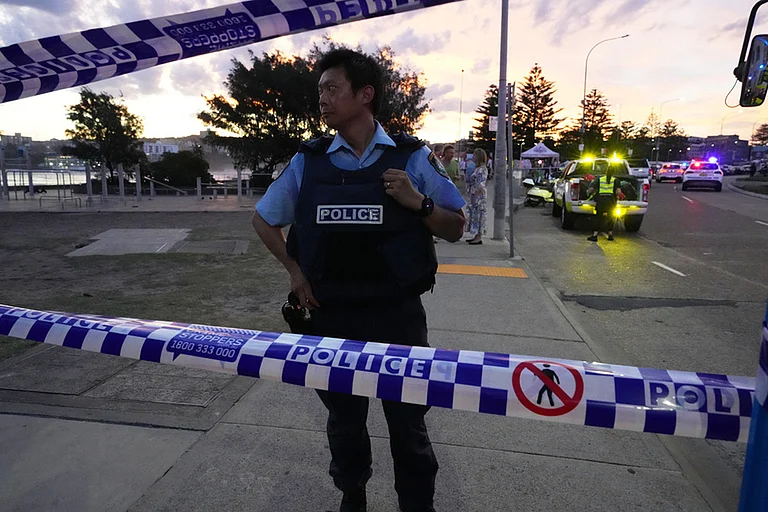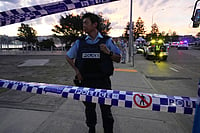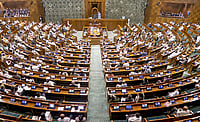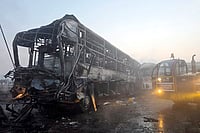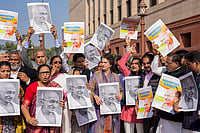
This is the name of a book written by the popular and famous fiction writer, Michael Crichton (of the Jurassic Park fame), in 2004. Although it is a thriller novel, it has dozens of footnotes (or references), which are real, and 21 pages of bibliography. Essentially, the book attacks environmental activists, and pooh-poohs the claims of global warming due to rise in the level of greenhouse gases. In effect, it attacks every element linked to global warming. Here are some referenced sections from it.
- “The reality is that in Iceland the first half of the twentieth century was warmer than the second half, as in Greenland. The reality is that in Iceland, most glaciers lost mass after 1910 because summers warmed up by 0.6 celsius, but since then the climate has become colder. The reality is that since 1920 these glaciers have been steadily advancing. They have regained half the ground that was lost earlier.”
- “These graphs show that carbon dioxide rose continuously (worldwide between 1890 and 2003), but temperature did not. It rose, then fell, then rose again.”
- “This is a thirty-year period (1940-70). One third of a century during which temperatures declined. Crops were damaged by frost in summer, glaciers in Europe advanced.”
- “In the US, the temperature went up in the last thirty years. But it went down in the previous thirty years. And current temperatures in the US are roughly the same as they were in the 1930s.”
- “The data shows that one relatively small area called the Antarctica Peninsula is melting and calving huge icebergs. That’s what gets reported year after year. But the continent (Antarctica)as a whole (which holds 90% of the ice on the planet) is getting colder and the ice is getting thicker.”
- “It’s a core issue. Urbanisation versus greenhouse gases as the cause of the increased average surface temperature. And the defense will have a good argument on their side. As I said before, several recent studies suggest the reduction for urban bias has, in fact, been too small. At least one study suggests that half of the observed temperature change comes from land use alone. If that’s true, then global warming in the past century is less than three-tenths of a degree. Not exactly a crisis.”
- In the book, one of the environmentalists mentions some of the threats due to global warming — crop failures, spreading deserts, new diseases, species extinction, melting glaciers, impact on Kilimanjaro, rise in sea level, extreme weather, tornadoes, hurricanes, and El Nino events. Crichton addresses each one:
“Actually, scientific studies do not support your claims. For example, crop failure — if anything, increased carbon dioxide stimulates plant growth. There is some evidence that this is happening. And the most recent satellite studies show that the Sahara has shrunk since 1980. As for new diseases — not true. The rate of emergence of new diseases has not changed since 1960.”
“Species extinction hasn’t been demonstrated either. In the 1970s, Norman Myers predicted a million species would be extinct by the year 2000. Paul Ehrlich predicted that fifty percent of all species would be extinct by the year 2000. But these were just opinions.”
“There are one hundred sixty thousand glaciers in the world. About sixty-seven thousand have been inventoried, but only a few have been studied with any care. There is mass balance data extending five years or more for only seventy-nine glaciers in the entire world. So, how can you say that they are all melting?”
“Actually Kilimanjaro has been melting since the 1800s — long before global warming. The loss of the glacier has been a topic of scholarly concern for over a hundred years. And it has always been something of a mystery, because, as you know, Kilimanjaro is an equatorial volcano, so it exists in a warm region. Satellite measurements of that region show no warming trend at the altitude of the Kilimanjaro glacier. So why is it melting? Because of deforestation. The rain forest at the base of the mountain has been cut down, so the air blowing upward is no longer moist. Experts think that if the forest is replanted the glacier will grow again.”
“Sea level is rising, as it has been for the last six hundred years, ever since the start of the Holocene. Sea level has been rising at the rate of ten to twenty centimetres — that four to eight inches — every hundred years.”
“US hurricane strikes over the last hundred years are clearly not increasing. And similarly, extreme weather is not more frequent globally.”
“As you know, El Nino is a... that begins when ocean temperature along the west coast of South America remains above normal for several months. Once it’s triggered, it lasts for a year and a half, affecting weather around the world. El Nino occurs every four years — twenty-three times in the last century. And it has been occurring for thousands of years. So it long precedes any claim of global warming.”










